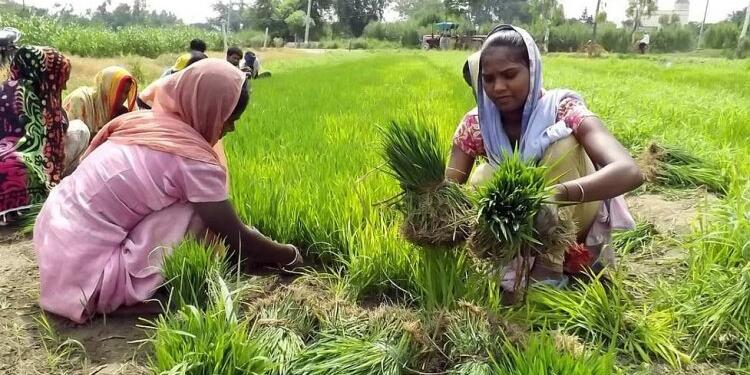The Union Cabinet has announced the minimum support price (MSP) for 14 Kharif season crops, including paddy, ragi, bajra, jowar, maize, and cotton. This decision, made on Wednesday, is expected to have a financial implication of Rs two lakh crore for the government and provide farmers with an additional Rs 35,000 crore compared to the previous season.
Financial Impact and Farmer Benefits
Addressing the media post-cabinet meeting, Information and Broadcasting Minister Ashwini Vaishnaw highlighted the significance of Prime Minister Modi’s third term. He emphasized that the government’s focus on continuity with change is evident through several decisions aimed at farmer welfare. Vaishnaw stated that the previous two terms of the Modi government had laid a robust foundation for economic growth, and the third term would bring significant benefits to the people, particularly farmers.
Increase in Minimum Support Price (MSP)
The Cabinet’s approval of MSP for 14 Kharif crops, including staple grains and cotton, ensures that farmers receive approximately Rs two lakh crore in support. This amount is Rs 35,000 crore more than the previous season. In this decision, the government reflects its commitment to providing farmers with prices that are 50 percent higher than the input cost. Notably, the highest absolute increase in MSP has been recommended for oilseeds and pulses.
Commitment to Farmer Welfare
Following his third swearing-in, Prime Minister Narendra Modi underscored the government’s dedication to farmer welfare by signing his first file to authorize the release of the 17th installment of the PM Kisan Nidhi. This move demonstrates the administration’s ongoing commitment to supporting farmers financially. On Tuesday, at an event in Varanasi, PM Modi released the 17th installment amounting to over Rs 20,000 crore to approximately 9.26 crore beneficiary farmers under the Pradhan Mantri Kisan Samman Nidhi (PM-KISAN) scheme through Direct Benefit Transfer.
Focus on MSP and Farmer Support
The announcement of the MSP for the Kharif season crops aligns with the government’s broader objective of boosting farmer incomes. By ensuring a 50 percent increase over the input costs, the government aims to alleviate financial pressures on farmers and promote agricultural sustainability. The strategic focus on oilseeds and pulses, which have seen the highest absolute increase in MSP, indicates a targeted approach to address specific agricultural needs.
Long-term Economic Growth and Farmer Welfare
Minister Vaishnaw reiterated that the first two terms of the Modi government were instrumental in establishing a strong economic base. In the third term, we have taken decisions designed to build on this foundation, ensuring that economic growth translates into tangible benefits for the agricultural sector. The emphasis on MSP increases and direct financial support through schemes like PM-KISAN highlights the government’s multi-faceted approach to farmer welfare.
What is MSP?
The government uses Minimum Support Price (MSP) as a policy tool to ensure that farmers receive a fair and remunerative price for their produce, irrespective of market fluctuations. It acts as a safety net by guaranteeing a minimum price at which the government will purchase crops from farmers, thereby protecting them from sharp declines in market prices.
Purpose of MSP
The primary purpose of MSP is to provide farmers with financial stability and a reliable income, which encourages them to continue agricultural activities. By assuring a minimum price, MSP helps in:
- Preventing Distress Sales: During periods of excess supply and low demand, authorities safeguard farmers against selling their crops at low prices.
- Ensuring Fair Compensation: Farmers receive a price that covers their production costs and includes a profit margin, promoting sustainable farming.
- Encouraging Crop Diversification: Higher MSPs for certain crops can incentivize farmers to diversify their production, leading to balanced agricultural growth.
Conclusion
The Union Cabinet’s decision to increase the MSP for 14 Kharif crops is a significant step towards supporting India’s farmers. With a financial outlay of Rs two lakh crore and an additional Rs 35,000 crore in farmer benefits, this move underscores the government’s commitment to agricultural sustainability and economic growth. The focus on providing prices 50 percent above input costs, particularly for oilseeds and pulses, reflects a strategic approach to enhance farmer incomes and promote sectoral resilience. Prime Minister Modi’s continued emphasis on farmer welfare, as demonstrated through the release of the PM Kisan Nidhi installment, reaffirms the administration’s dedication to supporting the agricultural community.
ALSO READ: Will Uddhav Thackeray Join the BJP? Thackeray firmly stated, ……?































